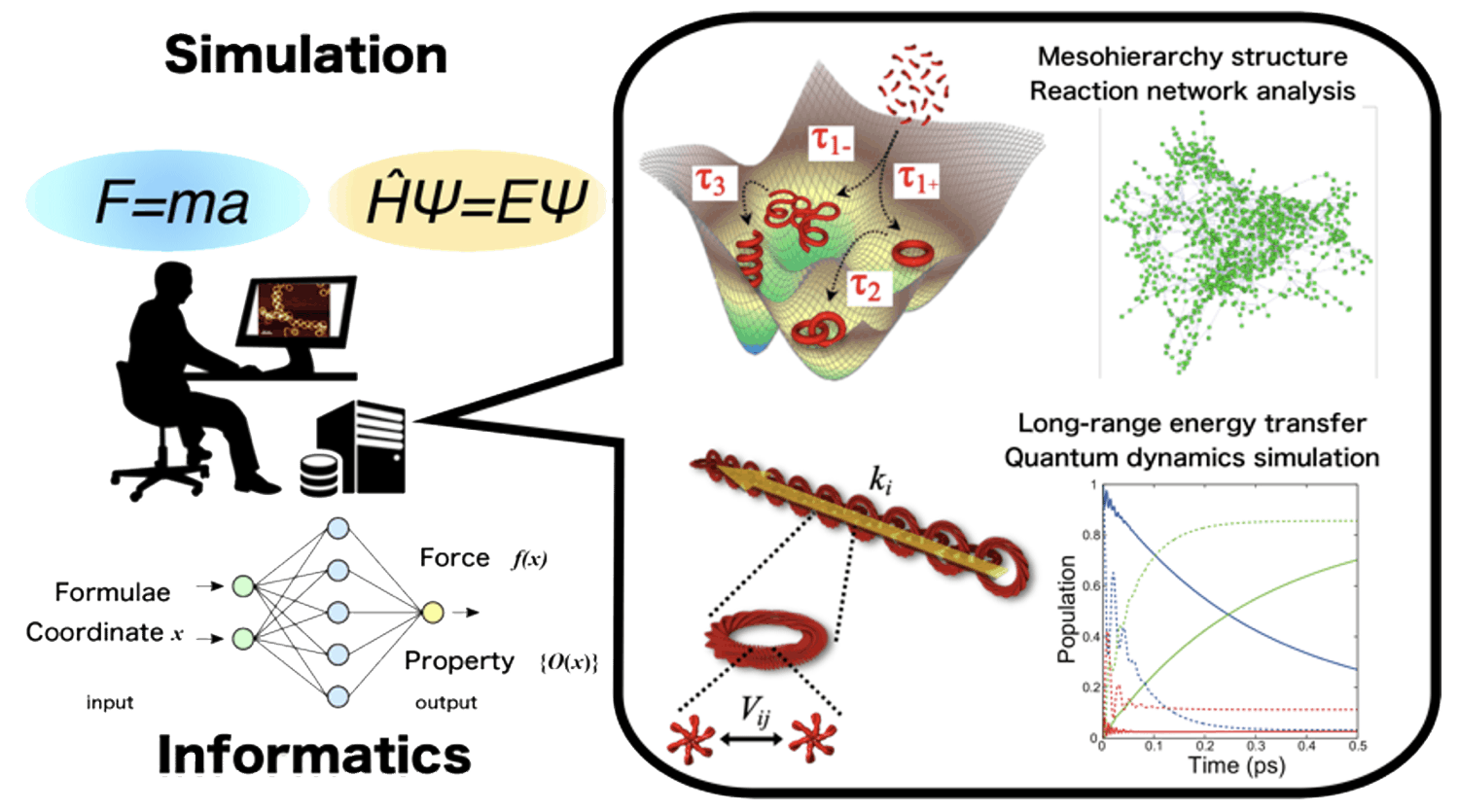
Research Outline of Meso-Hierarchy / A01 / A02 / A03 / B01
Research Outline of Meso-Hierarchy
Bulk materials, such as conventional crystalline materials, liquid crystals, or amorphous materials such as polymers, are formed by self-assembly and self-organization of synthetic molecules or inorganic materials, and have structure in which the periodicity of the nanoscale is simply extended to the macroscale. In most cases there is no hierarchy in the mesoscopic region (several nanometers to micrometers) that connects the nano- and macroscopic scales. On the other hand, in biological tissues where various molecules and biopolymers are densely packed, hierarchical structures are formed as a matter of course, and amazing functions are derived from such hierarchical structures. If we could construct structural hierarchy in the mesoscopic region, which is an unexplored area in the field of functional materials, and develop innovative dynamic materials in this size region, we should be able to bring about a major revolution in the field of functional materials. For this purpose, it is important to establish not only the sophisticated nanostructure manufacturing technologies that have been actively studied so far, but also set up the scientific principles for hierarchical assembly of the nanostructures in the mesoscopic region and for exploring their functions.

In this area of scientific innovation, we define “mesohierarchical materials” as materials that are hierarchically self-assembled and self-organized in the mesoscopic region. In our research project, we cover broad spectrum of topics, from supramolecular chemistry, mesohierarchical material assembly technology and design theory, to structural visualization, energy level control by strong coupling, and technology for mesoscale mechanical manipulation. The project provides a platform where researchers who focus on various aspects of mesoscopic hierarchical structures can collaborate with each other. By advancing this field through the collaboration of scientists with various research backgrounds, we will accumulate the required knowledge and develop a comprehensive understanding of meso-hierarchical materials. This effort will establish the interdisciplinary field of “meso-hierarchical materials science” that links the nano to the macro, and will bring about an academic revolution in the creation of novel materials. The research will be conducted in four research areas (A01-A03, B01) involving seven research groups. In the publicly solicited research, we expect research proposals that complement the existing areas or bring new ideas for these research topics.
A01 Meso-Hierarchy Synthesis
A01-1 Meso-Hierarchy Figuration
If we can develop one-dimensional soft materials that can freely deform like wires on the meso scale (3 to 300 nm), we will be able to create small materials that can manipulate nano-objects, or transport energy and charges along curved paths, which was previously impossible. To create one-dimensional materials that can be freely curved on a mesoscopic scale, we need “Meso-Hierarchy Figuration” technology, which skillfully controls the hierarchical self-assembly of molecules to create curved structures. In this research, we will further develop the hierarchical curvature self-assembly technology realized by the Principal Investigator and apply it to diverse molecular assemblies such as artificial nucleic acids and host-guest supramolecular polymers to create an unexplored class of materials, “Meso-Hierarchy Materials”. We will also examine photophysical and electronic properties of these mesomaterials in the mesoscopic region.

A01-2 Cinematic Molecular Science of Meso-Hierarchy
In order to solve the problem of molecular-based materials science that “materials with desired functions are not necessarily obtained even if molecular-level designs are available,” it is necessary to understand not only the molecular designs but also molecular assembly processes that develop hierarchically on the mesoscopic scale (3 to 300 nm). In this study, we aim to elucidate the formation process of meso-hierarchical materials at scales ranging from molecular to meso by using the latest “cinematic molecular science” techniques such as single-molecule atomic-resolution time-resolved electron microscopy (SMART-EM) and high-speed atomic force microscopy (HS-AFM). This research will allow us to capture real-time images of temporal evolutionary changes of intermediate species in molecular assembly events such as nucleation and growth, and to elucidate the formation mechanism of meso-hierarchical materials. We will also try to visualize the response to external stimuli at the molecular level and elucidate the dynamics of meso-hierarchical materials in a non-equilibrium state.
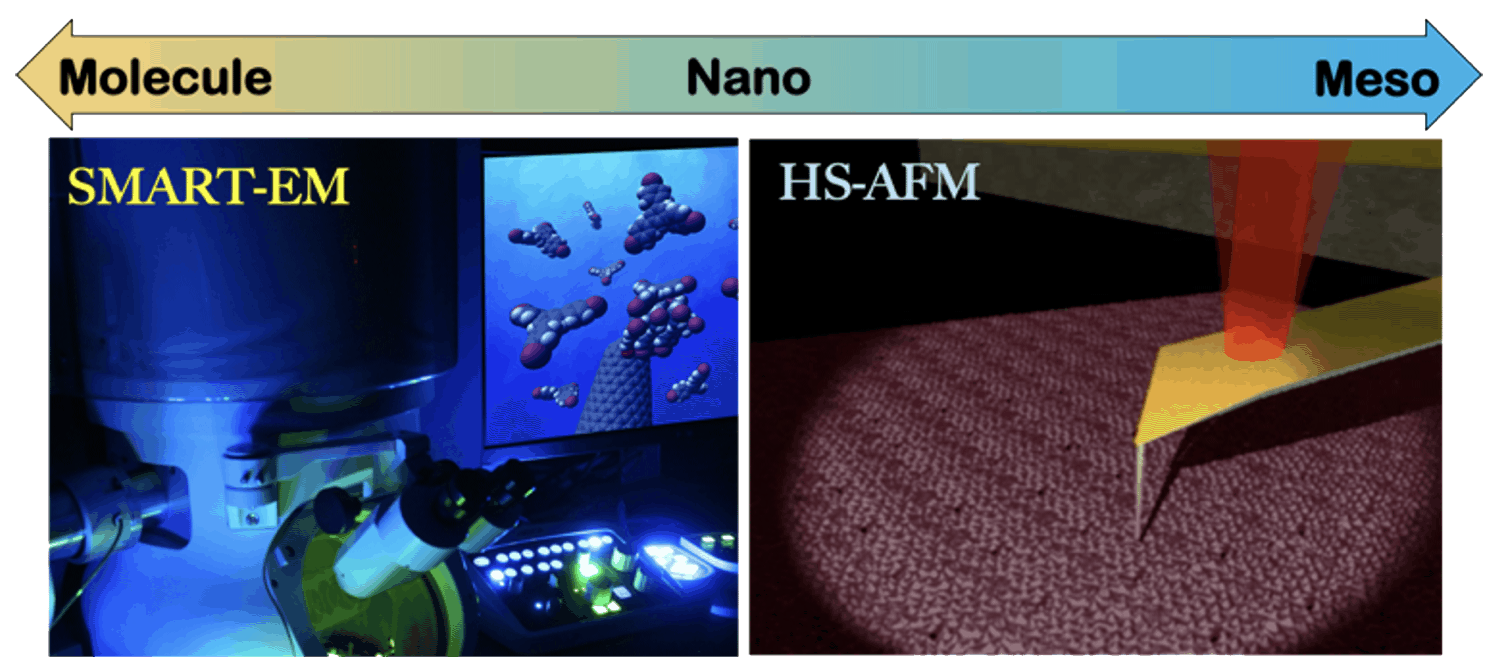
A02 Photofuctional Science of Meso-Hierarchy
A02-1 Photofunctional Science of Meso-Hierarchy
In signal transduction of biological molecular systems, many signal molecules can respond and react to even the slightest stimulus. In contrast, with synthetic molecules it is difficult to construct amplified response molecular systems because basically only one molecule responds to one stimulus. In this study, our aim is to achieve significant amplification responses driven by photoexcitation of highly controlled mesoscopic hierarchical structures. Especially, we focus on the amplification of the number of responsive molecules (e.g., excitons and energies) by utilizing various photoreactions such as multi-exciton generation (MEG), photon up-conversion, and thermally activated delayed fluorescence (TADF). Moreover, we will construct organic and inorganic hybrid molecular systems (containing, e.g., quantum dots or metal nanoclusters) to actively integrate their features and create “force ⇄ light” and “light ⇄ light” functions.
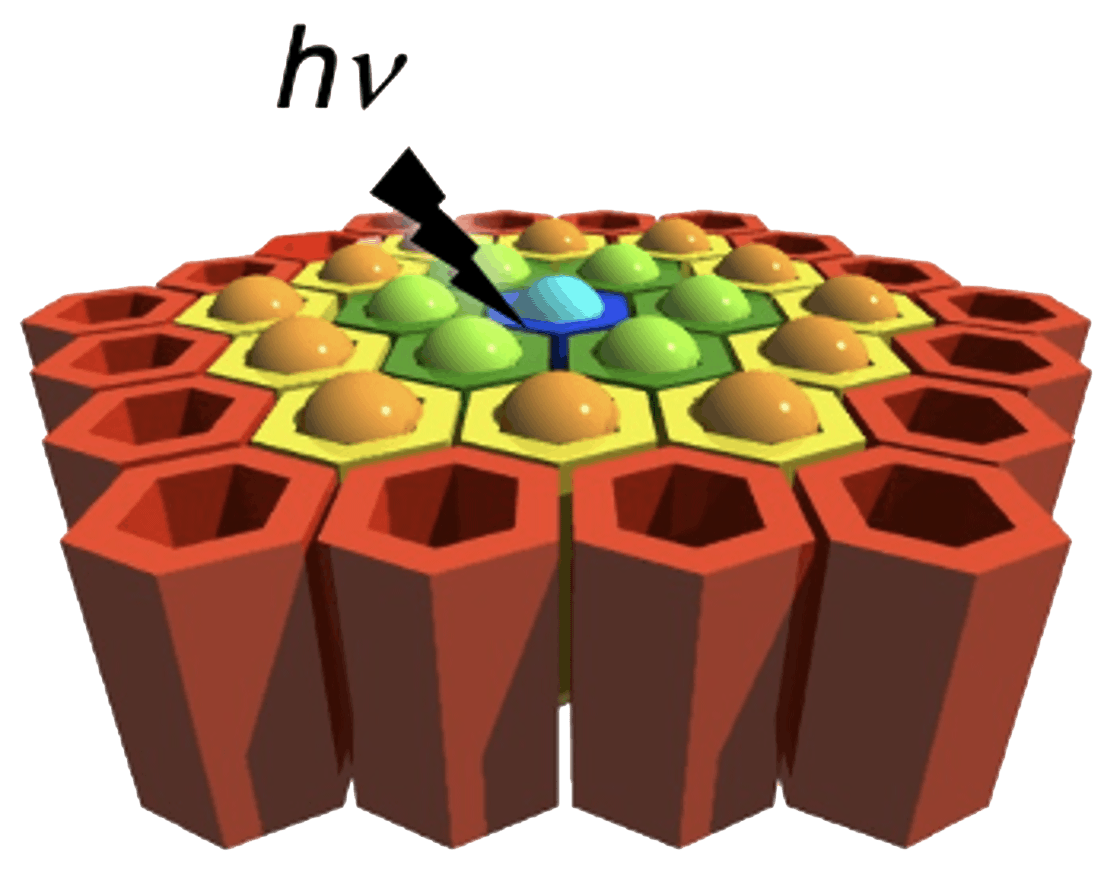
A02-2 Meso-Hierarchy Optical Characterization
Supramolecular structures have attracted attention because they exhibit structure-specific properties such as long-range transport of excitons. In “meso-hierarchical structures” in which these supramolecular structures are further hierarchically integrated, completely new optical functions and properties are expected. In this study, single molecule spectroscopy and atomic force microscopy will be used to examine new functions at various scales from individual supramolecular structures to meso-hierarchical assemblies. The ultimate goal is to elucidate and fully control the key factors that determine the long-range transport of singlet and triplet excitons in meso-hierarchical structures. Specifically, we will study the meso-hierarchical structures created by A01-A03 and use fluorescence and atomic force microscopy to look into the changes in photophysical properties upon local mechanical stimulation in terms of molecular alignment and the resulting exciton coupling. Further, in mechanochromic supramolecular fibers, we will attempt to control the exciton transport by local structural changes induced by the mechanical stimuli. In addition, we will aim at realizing the exciton transport control using surface plasmon polaritons.
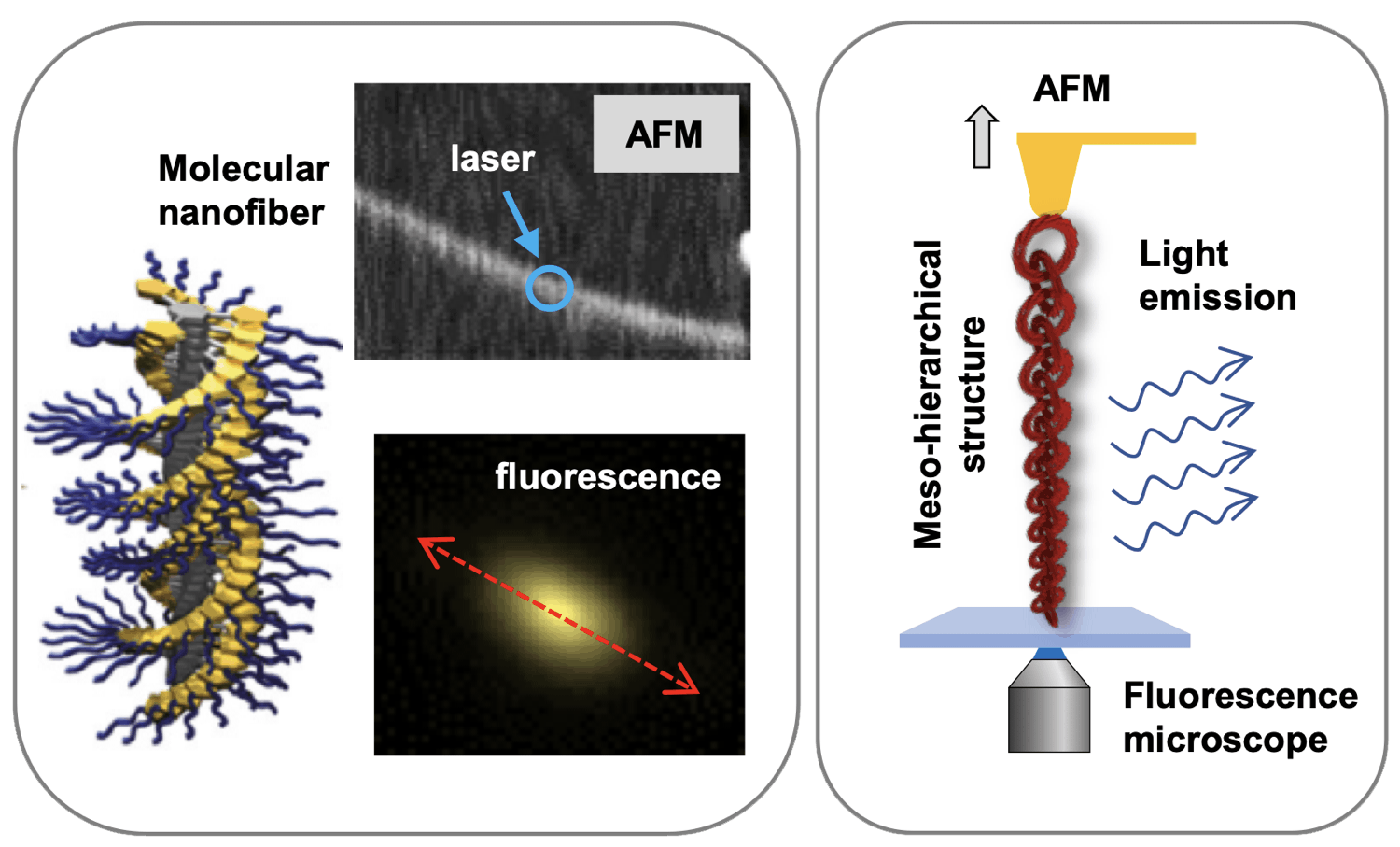
A03 Structural Dynamics of Meso-Hierarchy
A03-1 Meso-Hierarchy Strong Coupling
Suppose we possess the capability to manipulate the photophysical properties of materials, specifically exciton dynamics, at the meso-scale. In such a scenario, we can usher in a new era of optoelectronics that bridges the gap between the nano- and micro-scales, exerting a significant impact on the fields of energy and environmental science. However, currently, there is no promising method available for analyzing and controlling exciton dynamics at the meso-scale. The goal of this project is to develop a measurement technique that unravels the intricacies of exciton dynamics in meso-structures. To achieve this, we will employ a 10 nm remote excitation method, originally devised by the Principal Investigators. Additionally, we will utilize optical cavity strong coupling to manipulate ultra-long-range energy transfer and exciton dynamics in meso-structures. This will enable us to develop a methodology for expressing unique photophysical properties. With these advanced technologies, we aim to establish the forefront of “meso-hierarchical photo-science” worldwide.
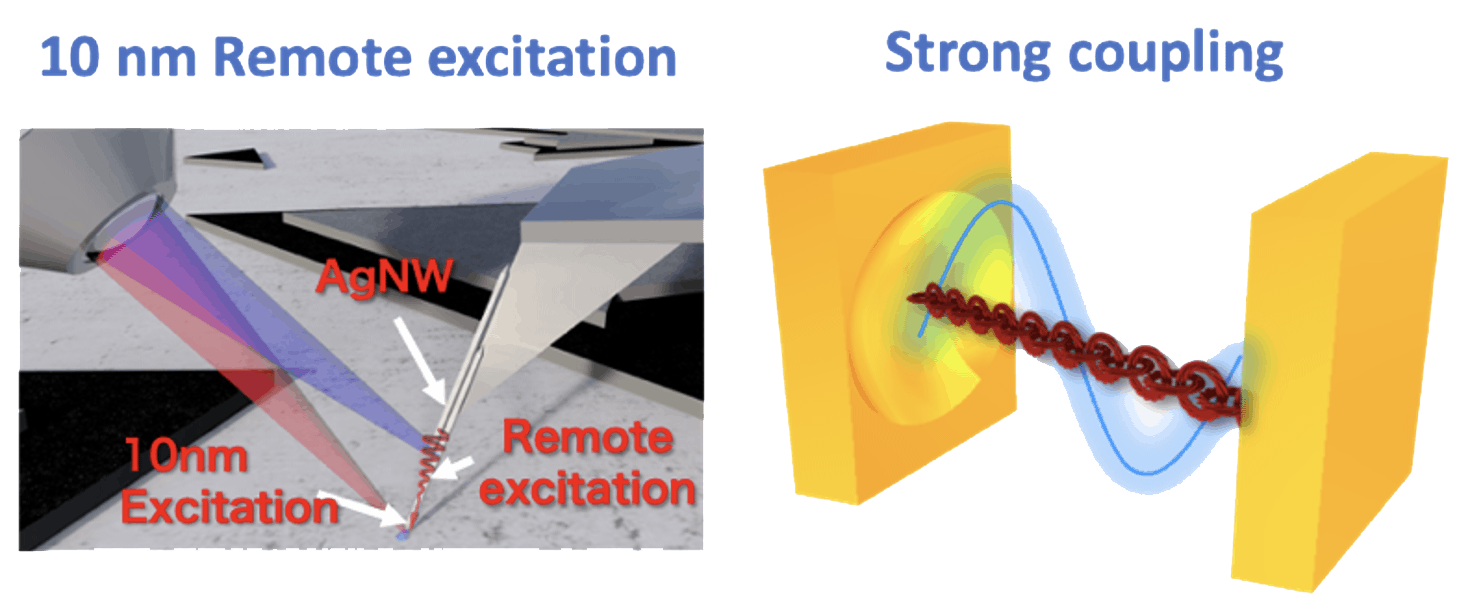
A03-2 Mechano-Functional Materials with Meso-Hierarchy
In recent years, the establishment of methods to visualize and quantitatively evaluate tiny forces on the order of pN has become one of the most important goals in nanomechanics. In this study, we aim to develop mechanochromic fluorescent supramolecular fibers with a width of only one molecule, and by introducing the concept of meso-hierarchy, to create meso-mechanofunctional materials that exhibit reversible linear changes in fluorescent properties in response to force, multi-step changes in fluorescent properties, and photoresponsive properties. Using a combination of atomic force microscopy and optical tweezers, we will examine the mechanoresponsiveness of the developed mesomechanofunctional materials when forces are applied at the meso level. In addition, we will elucidate the correlation between changes in the structure of molecular assemblies and their stimuli-responsive luminescence properties using a structural analysis method based on metal organic frameworks. Furthermore, we will also contribute to the development of this field by developing and providing a wide range of supramolecular mechanophores for visualizing the forces generated by meso-hierarchical materials developed in the field.

B01 Meso-Hierarchy Theory
The theory for meso-hierarchical systems is not fully established to analyze the interesting phenomena at this scale using conventional brute force first-principles and MD calculations because of the hierarchical nature of the space and time scales. The aim of this study is to develop a reliable molecular theory for mesoscopic phenomena emerging at meso-hierarchical materials. Specifically, we will develop a many-body quantum model for the light-matter strong coupling field under external force and (coarse-grained) simulation methods for self-assembling process of meso-hierarchical materials. Using these methods, we will perform first-principles design of functional materials at mesoscopic level. In collaboration with synthetic chemists in the area, we also aim to contribute to the establishment of the meso-hierarchy scientific principles by elucidating the functions of meso-hierarchical materials and deriving design guidelines.
